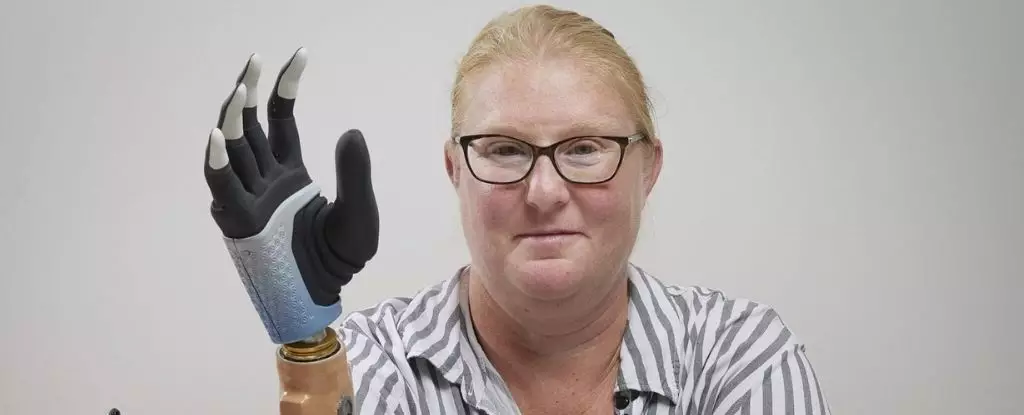In an exciting development in the field of prosthetics, a 50-year-old Swedish woman named Karin has received a cutting-edge bionic hand that has transformed her life. This revolutionary prosthesis, developed by an international team of engineers, utilizes groundbreaking technology that connects directly to the user’s bones, muscles, and nerves. By creating a human-machine interface, this bionic hand allows artificial intelligence to translate brain signals into precise and intuitive movements. Karin, who had been living without a right hand for two decades, can now perform 80 percent of her usual daily activities, significantly reducing her dependency on medication and alleviating phantom pain. This article explores the remarkable advancements of this bionic hand and its potential to improve the lives of individuals facing limb loss.
For years, prosthetic technology has relied on external sensory electrodes placed just under the “skin” of the robotic hand. However, this conventional approach has limited the control and effectiveness of these devices. Robotics engineer Max Ortiz Catalán, the leader of the research team, sought a better solution. Over the last decade, he has been working on incorporating osseointegration into prosthetics.
Osseointegration involves the placement of an implant directly into the bone, where bone cells grow tightly around it. Combining this technique with reconstructive surgery allows for the direct attachment of an artificial limb to the skeleton. In Karin’s case, two implants were positioned in her ulna and radius bones, with a muscle graft connecting them to the severed muscles and nerves in her arm stump. The muscle grafts also contained electrodes to amplify signals to the neural interface.
The bionic hand received by Karin, aptly named the Mia Hand, represents a significant milestone in prosthetic technology. Unlike previous models on the market, this hand contains embedded sensors, allowing for a higher quality and quantity of sensory signals. By directly anchoring the prosthesis to the bone, comfort is greatly improved compared to traditional ball-and-socket prostheses.
Moreover, the sensory electrodes embedded inside the hand enable consistent and reliable perception of direct neural stimulation. This advancement led to a remarkable improvement in Karin’s grip precision, nearly quadrupling her previous abilities. With a success rate of 95 percent, she can now move each of the bionic fingers individually, providing her with a limited sense of touch.
Karin’s experience with the bionic hand has been nothing short of transformational. Previously, she endured excruciating phantom pain, which she likened to her hand going through a meat grinder. However, after receiving the prosthesis, her pain significantly decreased, resulting in a reduced need for medication. This breakthrough not only improves the daily lives of amputees but also offers hope for alleviating phantom limb pain, a condition that has long troubled individuals with limb loss.
The success of Karin’s bionic hand has far-reaching implications for individuals facing limb amputations below the elbow. The long-term viability and comfort of this technology demonstrate its promising potential for improving the lives of millions around the world. The bionic hand offers the ability to carry out essential daily activities, such as preparing food, picking up objects, and performing various tasks that were previously challenging.
The international team of engineers behind this groundbreaking bionic hand is thrilled with the results achieved thus far. Professor Ortiz Catalán and his collaborators continue to develop next-generation bionic limb technology, with a focus on alleviating phantom limb pain. The potential to provide relief and improve quality of life for individuals with amputations is an exciting prospect.
Looking ahead, the integration of biology and electronics holds immense promise. By further enhancing osseointegration and refining the human-machine interface, future iterations of bionic hands and limbs may offer even greater capabilities. Continued research and development in this field will undoubtedly contribute to a future where prosthetic technology enables individuals to lead fulfilling and independent lives.
The introduction of the transformative bionic hand has marked a significant leap forward in prosthetic technology. Through a combination of osseointegration, neural interfaces, and embedded sensors, this revolutionary prosthesis offers increased functionality and comfort for individuals facing limb loss. Karin’s success story serves as a beacon of hope for millions, providing renewed confidence in the potential of bionic limbs to improve lives. With ongoing advancements, the future of prosthetics holds the promise of further enhancing mobility, independence, and overall well-being for amputees worldwide.


Leave a Reply